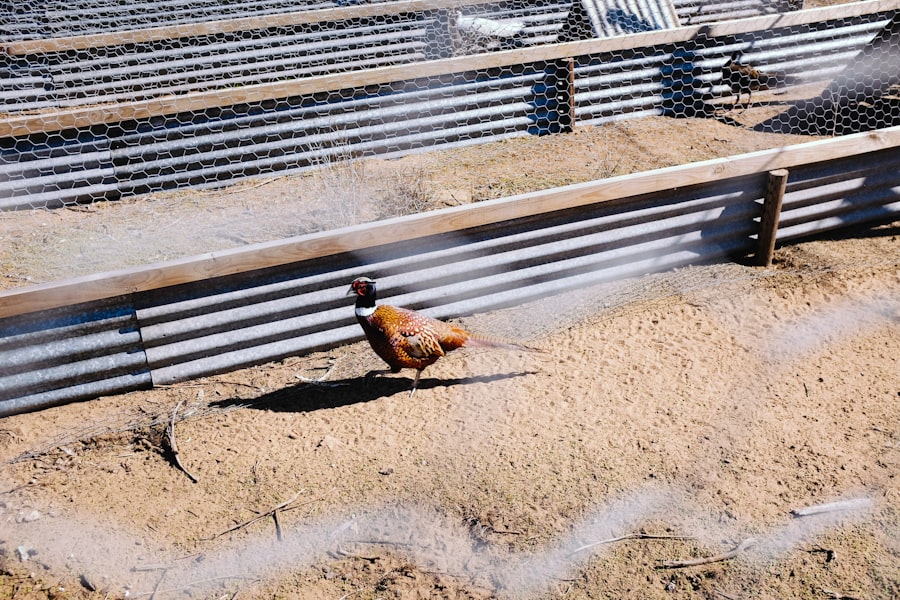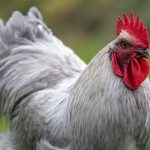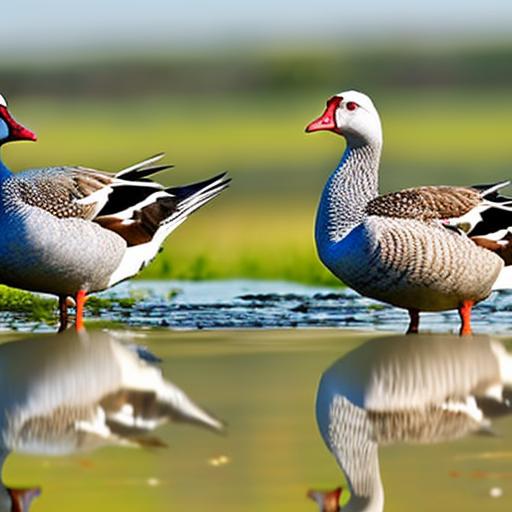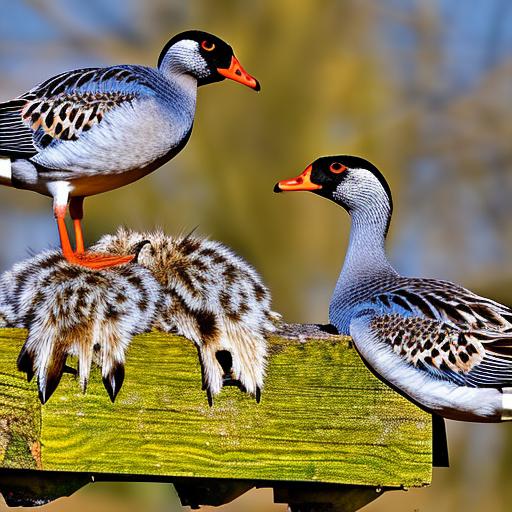Birds possess a natural instinct to fly, which is crucial for their physical and mental health. Flight enables birds to exercise, maintain a healthy weight, and engage their minds. It also provides them with a sense of autonomy and freedom.
Many bird species rely on flight as a means of predator evasion and for locating food and shelter. Bird owners should understand this instinct to better appreciate the importance of providing safe flying opportunities for their pets. In their natural habitats, birds spend considerable time flying as part of their daily activities.
Captive birds that are unable to fly may develop physical and psychological problems, including obesity, muscle deterioration, and stress. It is therefore vital for bird owners to acknowledge this natural instinct and implement measures to allow their birds to fly safely in a controlled environment. By recognizing and accommodating the instinct to fly, bird owners can create a more enriching and satisfying living space that promotes the overall well-being of their avian companions.
Table of Contents
Key Takeaways
- Birds have a natural instinct to fly and it’s important to understand and respect this instinct when caring for them.
- Building a secure run is essential to ensure the safety of birds and prevent them from escaping or being attacked by predators.
- Clipping wings can be a controversial topic, but it can be necessary to prevent birds from flying away or getting into dangerous situations.
- Providing enrichment such as perches, toys, and foraging opportunities is important for the physical and mental well-being of birds.
- Supervised free-range time allows birds to exercise and explore, but installing a net or roof can help prevent them from flying away or being attacked by predators.
- Training birds with positive reinforcement can help them learn to come when called and stay within designated areas, enhancing their safety and freedom.
Building a secure run
Designing a Secure Run
A run is an enclosed space that allows birds to stretch their wings and fly without the risk of escaping or encountering predators. When building a run for birds, it is important to consider the size and species of the birds, as well as the materials and design of the enclosure.
Key Features of a Bird Run
The run should be spacious enough to allow birds to fly freely and should be constructed with durable materials that can withstand the elements and potential attempts at escape. The design of the run should also include perches, branches, and other structures that mimic the natural environment of the birds. These elements provide birds with opportunities for exercise, exploration, and mental stimulation.
Providing Essential Resources
Additionally, the run should be equipped with food and water stations to ensure that birds have access to essential resources while they are flying. By building a secure run, bird owners can provide their pets with a safe and enriching environment that allows them to engage in their natural instinct to fly.
Clipping wings
Another method for managing a bird’s ability to fly is by clipping their wings. Wing clipping involves trimming the primary feathers of a bird’s wings to limit their ability to achieve lift and fly long distances. This practice is commonly used by bird owners as a way to prevent their pets from escaping or injuring themselves while flying indoors.
However, wing clipping should be done with caution and only by experienced individuals, as improper trimming can cause pain, discomfort, and injury to the bird. When considering wing clipping, it is important for bird owners to consult with a veterinarian or avian specialist to determine the appropriate method and frequency of trimming for their specific bird species. It is also crucial to consider the potential impact of wing clipping on a bird’s physical and psychological well-being.
While wing clipping may prevent birds from flying, it also limits their ability to exercise, explore, and engage in natural behaviors. Therefore, it is essential for bird owners to weigh the potential benefits and drawbacks of wing clipping and consider alternative methods for managing their bird’s flight capabilities.
Providing enrichment
In addition to providing opportunities for flight, it is important for bird owners to offer enrichment activities that stimulate their pets’ physical and mental well-being. Enrichment can take many forms, including toys, puzzles, foraging opportunities, and social interaction. These activities help prevent boredom, reduce stress, and promote overall health for birds.
When selecting enrichment activities for birds, it is important to consider their natural behaviors and preferences. For example, some birds may enjoy shredding toys or foraging for treats, while others may prefer interactive games or socializing with their human companions. By providing enrichment activities, bird owners can create a stimulating and engaging environment that encourages natural behaviors and promotes overall well-being for their pets.
Enrichment also plays a crucial role in managing a bird’s flight instinct by providing alternative outlets for physical activity and mental stimulation. Additionally, enrichment activities can help prevent behavioral issues such as feather picking, aggression, and excessive vocalization. Therefore, it is essential for bird owners to incorporate a variety of enrichment activities into their pets’ daily routine to ensure a fulfilling and enriching environment.
Supervised free-range time
Supervised free-range time is another way for bird owners to manage their pets’ flight instinct while providing opportunities for exercise and exploration. Free-range time involves allowing birds to fly in a controlled indoor or outdoor space under close supervision. This practice allows birds to stretch their wings and engage in natural behaviors while ensuring their safety and security.
When providing free-range time for birds, it is important for owners to remove potential hazards from the environment, such as toxic plants, open windows, or other pets. Supervised free-range time also provides an opportunity for social interaction between birds and their human companions. This time allows for bonding, training, and mental stimulation through activities such as flying to a designated perch or participating in interactive games.
By incorporating supervised free-range time into their pets’ daily routine, bird owners can promote physical exercise, mental stimulation, and socialization while managing their pets’ flight instinct in a safe and controlled manner.
Installing a net or roof

Effective Solution for Bird Owners
Installing a net or roof over an outdoor enclosure is an effective solution for bird owners who want to provide their pets with outdoor flight opportunities while ensuring their safety. A net or roof provides birds with the freedom to fly outdoors while preventing them from escaping or encountering predators.
Key Considerations for Installation
When installing a net or roof over an outdoor enclosure, it is important to use durable materials that can withstand weather conditions and potential attempts at escape. The design of the net or roof should also allow for adequate airflow and sunlight while providing protection from elements such as rain, wind, and extreme temperatures.
Creating a Natural Environment
The outdoor enclosure should be equipped with perches, branches, and other structures that mimic the natural environment of the birds. This will help to create a stimulating and engaging space for the birds to fly and exercise.
A Safe and Secure Environment
By installing a net or roof over an outdoor enclosure, bird owners can provide their pets with the opportunity to fly outdoors in a safe and secure environment. This allows birds to exercise their natural behavior while minimizing the risk of escape or harm.
Training with positive reinforcement
Training with positive reinforcement is an effective method for managing a bird’s flight instinct while promoting desired behaviors. Positive reinforcement involves rewarding birds for engaging in specific behaviors such as returning to a designated perch or participating in training exercises. This method helps birds associate flying with positive experiences and encourages them to engage in desired behaviors while discouraging unwanted behaviors such as escaping or aggressive flying.
When training with positive reinforcement, it is important for bird owners to use rewards such as treats, praise, or toys that are highly motivating for their pets. Consistency, patience, and clear communication are also essential components of successful training with positive reinforcement. By incorporating this method into their pets’ daily routine, bird owners can effectively manage their pets’ flight instinct while promoting desired behaviors and strengthening the bond between themselves and their pets.
In conclusion, understanding the instinct to fly is crucial for bird owners who want to provide a fulfilling and enriching environment for their pets while ensuring their safety and security. By building a secure run, providing enrichment activities, offering supervised free-range time, installing a net or roof over an outdoor enclosure, and training with positive reinforcement, bird owners can effectively manage their pets’ flight instinct while promoting physical exercise, mental stimulation, socialization, and overall well-being. These methods allow birds to engage in natural behaviors while ensuring their safety and security in both indoor and outdoor environments.
If you’re looking for tips on how to keep chickens from flying out of the run, you might also be interested in learning about how many chickens you need for a family of 4. Check out this article for some helpful insights on determining the right number of chickens for your family’s egg needs.
FAQs
What are some methods to keep chickens from flying out of the run?
Some methods to keep chickens from flying out of the run include clipping their flight feathers, adding a roof or netting to the run, and providing plenty of enrichment and space within the run to discourage flight.
How can I clip my chickens’ flight feathers?
To clip your chickens’ flight feathers, you will need a pair of sharp scissors or poultry shears. Carefully hold the chicken and trim the primary feathers on one wing, being careful not to cut the blood feathers. This will temporarily prevent the chicken from being able to fly.
What are the benefits of adding a roof or netting to the run?
Adding a roof or netting to the run can prevent chickens from flying out and protect them from predators such as hawks and other birds of prey. It also provides shade and protection from the elements.
Why is it important to provide enrichment and space within the run?
Providing enrichment and space within the run can help to keep chickens entertained and discourage them from trying to escape. This can include things like perches, dust baths, and plenty of room to roam and forage.
Meet Walter, the feathered-friend fanatic of Florida! Nestled in the sunshine state, Walter struts through life with his feathered companions, clucking his way to happiness. With a coop that’s fancier than a five-star hotel, he’s the Don Juan of the chicken world. When he’s not teaching his hens to do the cha-cha, you’ll find him in a heated debate with his prized rooster, Sir Clucks-a-Lot. Walter’s poultry passion is no yolk; he’s the sunny-side-up guy you never knew you needed in your flock of friends!







